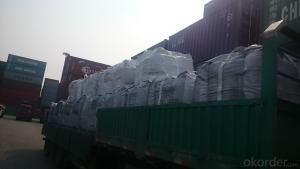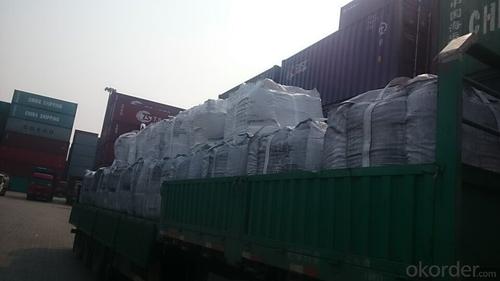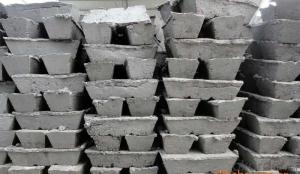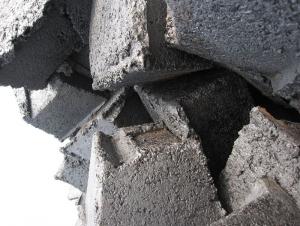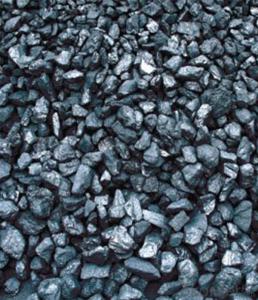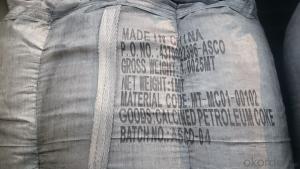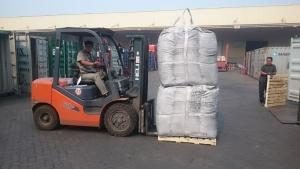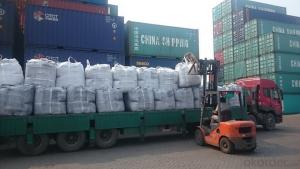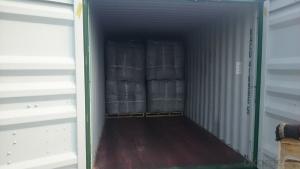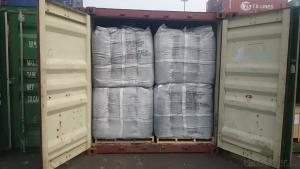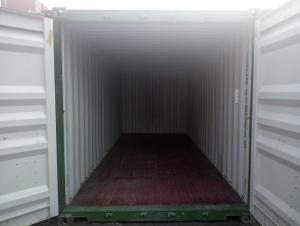Used in EAF as Charge Coke for Steel Mills with Mositure 0.5%max
- Loading Port:
- Tianjin
- Payment Terms:
- TT OR LC
- Min Order Qty:
- 21 m.t.
- Supply Capability:
- 6000 m.t./month
OKorder Service Pledge
OKorder Financial Service
You Might Also Like
Introduction:
Calcined anthracite can be called carbon additive, carbon raiser, recarburizer, injection coke, charging coke, gas calcined anthracite.
Carbon Additive/Calcined Anthracite Coal may substitute massively refinery coke or graphite. Meanwhile its cost is much less than the refinery coke and graphite. Carbon Additive is mainly used in electric steel ovens, water filtering, rust removal in shipbuilding and production of carbon material.
It has good characteristics with low ash, low resistivity, low sulphur, high carbon and high density. It is the best material for high quality carbon products. It is used as carbon additive in steel industry or fuel.
Features:
Best quality Taixi anthracite as raw materials through high temperature calcined at 800-1200 ℃ by the DC electric calciner with results in eliminating the moisture and volatile matter from Anthracite efficiently, improving the density and the electric conductivity and strengthening the mechanical strength and anti-oxidation, It has good characteristics with low ash, low resistivity, low carbon and high density. It is the best material for high quality carbon products, it is used as carbon additive in steel industry or fuel.
Specifications:
F.C.% | 95MIN | 94MIN | 93MIN | 92MIN | 90MIN | 85MIN | 84MIN |
ASH % | 4MAX | 5MAX | 6 MAX | 6.5MAX | 8.5MAX | 12MAX | 13MAX |
V.M.% | 1 MAX | 1MAX | 1.0MAX | 1.5MAX | 1.5MAX | 3 MAX | 3 MAX |
SULFUR % | 0.3MAX | 0.3MAX | 0.3MAX | 0.35MAX | 0.35MAX | 0.5MAX | 0.5MAX |
MOISTURE % | 0.5MAX | 0.5MAX | 0.5MAX | 0.5MAX | 0.5MAX | 1MAX | 1MAX |
Pictures
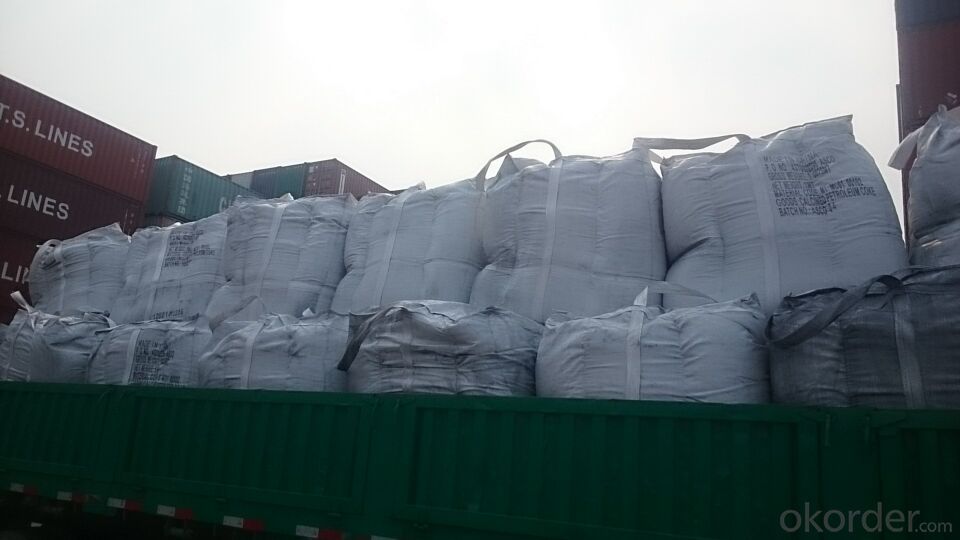
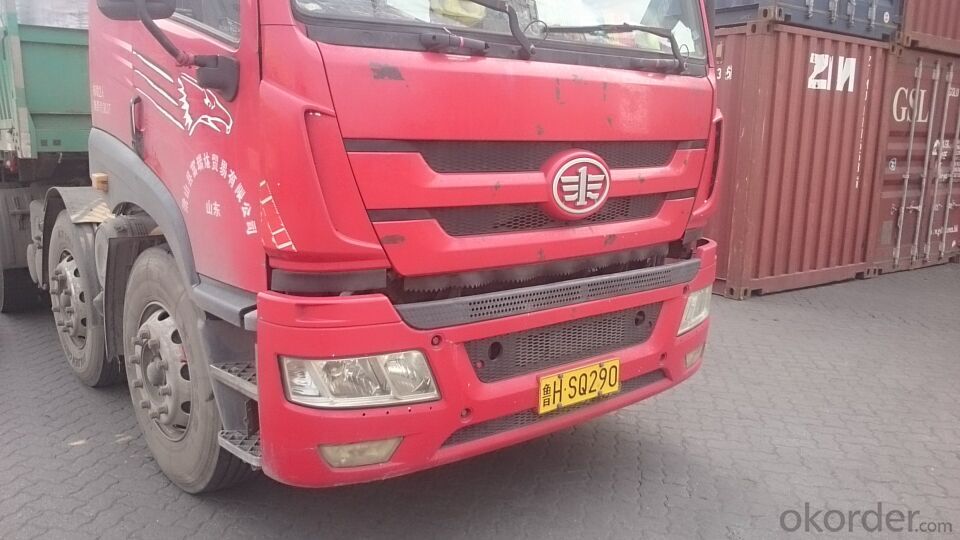
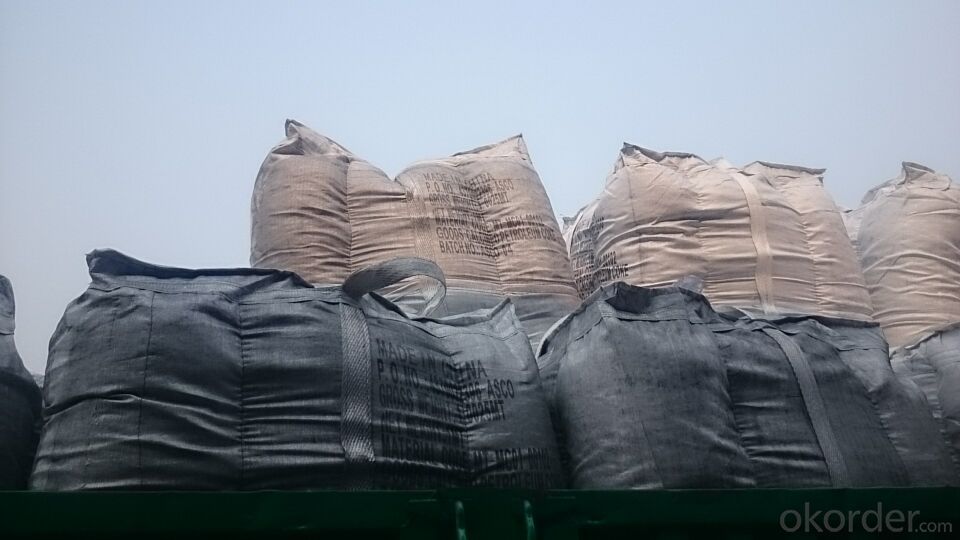
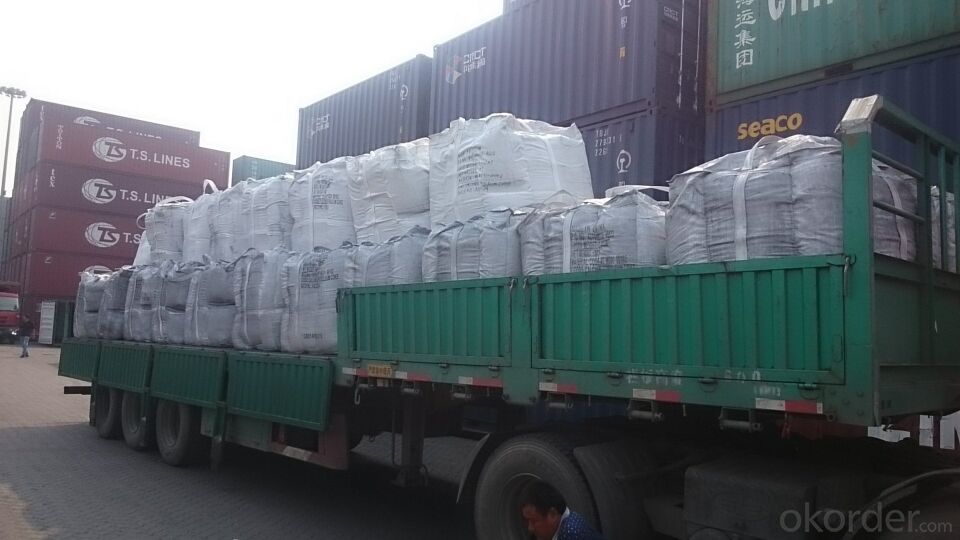
FAQ:
Packing:
(1). Waterproof jumbo bags: 800kgs~1100kgs/ bag according to different grain sizes;
(2). Waterproof PP woven bags / Paper bags: 5kg / 7.5kg / 12.5kg / 20kg / 25kg / 30kg / 50kg small bags;
(3). Small bags into jumbo bags: waterproof PP woven bags / paper bags in 800kg ~1100kg jumbo bags.
Payment terms
20% down payment and 80% against copy of B/L.
Workable LC at sight,
- Q: What is the role of carbon in respiration?
- Carbon plays a crucial role in respiration as it is a key component of organic molecules such as glucose. During respiration, glucose is broken down in the presence of oxygen to produce energy in the form of ATP. The carbon atoms in glucose are oxidized, releasing electrons that are ultimately transferred to oxygen, forming carbon dioxide (CO2) as a byproduct. This process, known as cellular respiration, occurs in all living organisms and is essential for the production of energy needed for various cellular processes. Without carbon, respiration would not be possible, and the energy required for growth, movement, and other life-sustaining activities would not be generated. Furthermore, the carbon dioxide produced during respiration is released into the atmosphere and serves as a crucial component of the carbon cycle, contributing to the regulation of Earth's climate and the growth of plants through photosynthesis.
- Q: What are the effects of carbon emissions on the stability of ice shelves?
- Carbon emissions contribute to global warming, which in turn leads to the melting of ice shelves. As carbon dioxide is released into the atmosphere, it acts as a greenhouse gas, trapping heat and causing a rise in temperature. This increase in temperature accelerates the melting of ice shelves, ultimately destabilizing them. The loss of ice shelves disrupts the delicate balance of the polar regions, leading to rising sea levels and increased risk of coastal flooding. Additionally, the melting of ice shelves can also contribute to the release of large quantities of freshwater into the ocean, potentially affecting ocean currents and disrupting marine ecosystems. Overall, carbon emissions have a significant negative impact on the stability of ice shelves and the overall health of our planet.
- Q: What are the potential uses of carbon nanomaterials in medicine?
- Carbon nanomaterials have immense potential in medicine due to their unique properties. They can be used for targeted drug delivery, imaging, tissue engineering, and diagnostics. Carbon nanotubes, for example, can transport drugs directly to cancer cells, reducing side effects. Additionally, carbon nanomaterials can provide high-resolution imaging of tissues and organs, aiding in early disease detection. Furthermore, they can be used to create scaffolds for tissue regeneration, promoting the growth of new cells and tissues. Overall, carbon nanomaterials hold great promise for revolutionizing medicine and improving patient outcomes.
- Q: How does carbon impact the prevalence of wildfires?
- There are several ways in which carbon affects the occurrence of wildfires. First and foremost, carbon dioxide (CO2) is a greenhouse gas that contributes to climate change. As the concentration of CO2 increases in the atmosphere, temperatures rise, resulting in drier conditions in many areas. These dry conditions create a more favorable environment for the ignition and spread of wildfires. Moreover, carbon plays a significant role in the amount of fuel available to feed wildfires. Carbon-based materials, such as dead vegetation, trees, and other organic matter, serve as the main source of fuel for fires. As carbon accumulates in ecosystems, either naturally or through activities like deforestation, the potential fuel for wildfires increases. This increased fuel load can lead to more frequent and intense fires. In addition, carbon has an impact on the health and vitality of forests. Higher levels of atmospheric CO2 can enhance plant growth, resulting in denser vegetation. Although this may seem beneficial, it actually contributes to the intensity and severity of wildfires. Denser vegetation means there is a greater amount of fuel available, especially when combined with the dry conditions caused by climate change. This combination becomes a recipe for more destructive fires. Lastly, the combustion of carbon-based materials during wildfires releases large amounts of carbon dioxide into the atmosphere. This creates a positive feedback loop, as the increased carbon emissions contribute to further climate change, which, in turn, worsens the conditions for wildfires. In summary, carbon plays a critical role in determining the occurrence and severity of wildfires through its impact on climate change, fuel load, forest health, and the release of greenhouse gases during combustion. It is essential to address carbon emissions and implement effective forest management practices in order to mitigate the risks and consequences associated with wildfires.
- Q: What are fullerenes?
- Composed entirely of carbon atoms arranged in a spherical or cage-like structure, fullerenes represent a distinct category of molecules. Their discovery in 1985 sparked significant interest due to their intriguing properties and potential applications across various domains. The most extensively studied and renowned type of fullerene is buckminsterfullerene, also known as C60. This particular fullerene comprises 60 carbon atoms and takes on the form of a hollow sphere resembling a soccer ball. Fullerenes can also consist of varying numbers of carbon atoms, such as C70, C84, or even larger clusters. What sets fullerenes apart is their exceptional stability and distinctive structure. Carbon atoms within a fullerene form covalent bonds, creating a closed network of hexagons and pentagons. This configuration not only gives fullerenes their characteristic shape but also grants them remarkable mechanical, thermal, and chemical stability. Fullerenes possess an array of captivating properties that make them highly appealing for scientific research and technological advancements. They exhibit impressive electrical conductivity and can serve as efficient electron acceptors or donors in organic electronic devices. Additionally, they boast excellent optical properties, such as strong light absorption and emission, which have led to their utilization in solar cells and photovoltaic devices. Furthermore, fullerenes have demonstrated potential in medical and biological applications. Their unique cage-like structure allows for the encapsulation of other molecules within their hollow interior, making them ideal candidates for drug delivery systems. Fullerenes also possess potent antioxidant properties, making them viable contenders for various therapeutic treatments. To summarize, fullerenes represent an enthralling group of carbon-based molecules with distinctive structures and extraordinary properties. Their versatility and potential applications in electronics, energy, medicine, and other fields continue to be explored, rendering them an area of study that is both thrilling and promising within modern science.
- Q: Iron and steel are different in terms of carbon content
- That is, high manganese content, less nickel or nickel free stainless steel. This stainless steel market costs more than 1000 yuan per ton of stainless steel with nickel. Some dealers is the use of good people are not on the stainless steel magnet suction misunderstanding, to deceive consumers, so the price as high with expensive stainless steel.There are more than 100 kinds of stainless steel, and the characteristics and functions are different. General decoration, landscape, sculpture using austenitic stainless steel. Because of the low thermal conductivity of austenitic stainless steel, using it as a kettle, wok, rice cooker is not appropriate, will use a lot of energy, but also to extend the boiling water cooking time. Using ferritic stainless steel as a wok and rice cooker, not only has excellent corrosion resistance, but also its thermal conductivity is nearly half higher than that of austenitic stainless steel.
- Q: Where are carbon fiber sheets and carbon fiber sheets used?
- Carbon reinforced materials, carbon fiber cloth is mainly used for concrete beam flexural and shear strengthening, flexural reinforcement, column reinforcement plate; plant, buildings, schools, hospitals and other industrial and civil building reinforcement; Luqiao, water conservancy, nuclear power and energy infrastructure reinforcement.Carbon fiber board is mainly used for concrete structure plate and beam repairing and reinforcing plate; opening wall and surrounding reinforcement; the wooden building beam reinforcement; reinforced bridge, bridge pier, truss; tunnel, cable pipeline repairing and reinforcing.
- Q: How are carbon nanotubes used in various applications?
- Carbon nanotubes are used in various applications due to their unique properties. They are used in electronics and semiconductors for their high conductivity, in energy storage devices for their high surface area and lightweight nature, and in medicine for drug delivery and imaging purposes. Additionally, carbon nanotubes find applications in materials science, aerospace engineering, and environmental remediation, among others, showcasing their versatility and potential impact across multiple fields.
- Q: What's the difference between blue and red Panasonic batteries (carbon)?
- Blue is leak, proof, general, Purpose, general use battery (leak proof)Red is the long life long life battery (suitable for watches and clocks and other small power appliances)And heavy duty green seems to be good for high power appliances, such as toy cars
- Q: The relative molecular mass was between 120-150. The testThe organic matter M, which contains only carbon, hydrogen and oxygen, was measured by mass spectrometer. The relative molecular mass was between 120-150. The mass fraction of oxygen element measured by experiment is 48.48%, the ratio of hydrocarbon to mass is 15:2, and only COOH in M molecule is measured by infrared spectrometer. Then the M formula is?
- The mass fraction of oxygen element is 48.48%, the mass fraction of hydrocarbon is =51.52%, and the mass ratio is 15:2. The mass fraction of carbon is =51.52%x15/ (15+2) =45.46%, and the mass fraction of hydrogen is =51.52%x2/ (15+2) =6.06%The atomic number of C, H and O is higher than that of =45.46%/12:6.06%/1:48.48%/16=3.79:6.06:3.03Molecules contain only COOH, and oxygen atoms must be even numbers.Therefore, the number of atoms in C, H and O can be reduced to =5:8:4, which may be C5H8O4, and the relative molecular weight is 132
Send your message to us
Used in EAF as Charge Coke for Steel Mills with Mositure 0.5%max
- Loading Port:
- Tianjin
- Payment Terms:
- TT OR LC
- Min Order Qty:
- 21 m.t.
- Supply Capability:
- 6000 m.t./month
OKorder Service Pledge
OKorder Financial Service
Similar products
Hot products
Hot Searches
